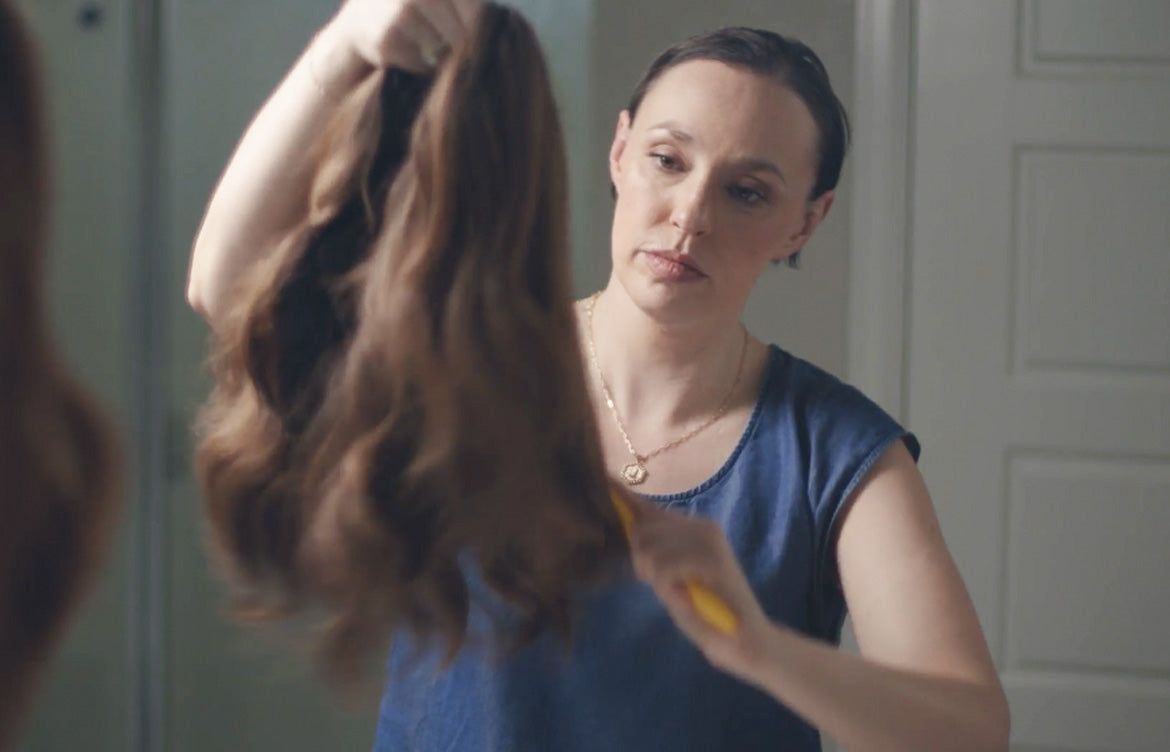Why Some Wigs Feel Uncomfortable During Chemo and How to Find Relief

A cancer diagnosis brings so many challenges such as managing your health, navigating treatment options, and facing uncertainties about the future. In the middle of all this, hair loss from chemotherapy can feel like another overwhelming hurdle.
For many, wearing a wig offers comfort, a sense of privacy, or simply a way to feel a little more like yourself during treatment. But what if the wig you choose is uncomfortable, itchy, or even painful?
You’re not alone if you’ve wondered, “Why does my wig feel so uncomfortable during chemo?” or “Are there high-quality human hair wigs that actually feel good to wear?”
In this article, we’ll answer your biggest questions about wig discomfort during chemotherapy, explain what causes it, and share proven ways to help you find comfort. Our goal is to help you make the best choices for your well-being, so you can focus on what matters most - your health and peace of mind.
How Chemotherapy Can Affect Your Scalp
Unfortunately, chemotherapy does more than just make your hair fall out. Many people notice their scalp feels different during treatment. It’s common for the skin on your head to become more sensitive, dry, or even a little tender as your hair starts to thin or fall out. You might experience itchiness, a tingling sensation, or patches of flakiness.
Some people find their scalp feels sore or irritated more easily than before, and changes in temperature can make this even more noticeable. All of these reactions are normal and simply part of how your body responds to chemotherapy. Taking care of your scalp during this time can help you feel more comfortable, whatever changes come your way.
Why Materials and Construction Matter in Human Hair Wigs for Chemo
When your scalp feels especially sensitive, the details in how a wig is made become really important. The softest, most comfortable wigs usually have gentle, breathable cap materials, smooth linings, and as few seams as possible. These features are designed to help prevent irritation and keep your scalp feeling cool and comfortable.
On the other hand, wigs with rough stitching, thicker materials, or caps not made for sensitive skin can sometimes cause itching or discomfort. That’s why it’s helpful to look for a wig that’s carefully made, so you can focus on your comfort and confidence every day.
The Importance of Proper Fit in Wigs for Chemotherapy Hair Loss
Getting the right fit is one of the most important steps when choosing a wig during or after chemotherapy. Cancer treatment can cause changes to your scalp and head shape, whether from hair loss, swelling, or even a little weight change. Sometimes these differences are small, but they can still have a big impact on how comfortable your wig feels day to day.
That’s why it’s so valuable to have a consultation with a professional wig specialist. An expert can measure your head, listen to your needs, and guide you toward wigs that offer both comfort and security. Adjustable features in high-quality human hair wigs can also help you get a snug yet gentle fit that adapts as your needs change.
It’s also a good idea to try on several different styles and cap constructions before you decide. Everyone’s head and preferences are unique, so what feels great for one person might not be right for another. Reputable wig retailers offer a generous return policy or a trial period, allowing you to wear your new wig at home and make sure it’s truly the best fit for you. This way, you can feel confident about your choice, knowing you can change your mind without any added stress or penalty.
How to Choose the Best Human Hair Wigs for Sensitive Scalps: A Quick Checklist
If you’re looking for a wig that feels comfortable and gentle on a sensitive scalp during chemotherapy, here are the key features to look for:
-
Soft, lightweight, and breathable cap materials
Look for caps made of fine silk to help keep your scalp cool and comfortable. -
Lace front or monofilament tops
These designs are often softer and more flexible, providing a natural look and feel against delicate skin. -
Smooth linings and minimal seams
Inside the wig, check for smooth, seamless construction to avoid irritation or rubbing on your scalp. -
High-quality human hair
Natural human hair is generally softer and less likely to irritate than synthetic fibers, especially for sensitive scalps. -
Professional fitting and custom sizing
Schedule a consultation with a wig specialist to get measured and try on different styles for the best fit. -
Try before you buy
Experiment with several options before purchasing, and ask about a trial period or money-back guarantee for peace of mind. -
Adjustable features
Look for wigs with straps or features that allow you to adapt the fit as your needs change during and after treatment.
Is It Worth Investing in a High-Quality Human Hair Wig for Chemotherapy?
If you’re preparing for chemotherapy and considering your options for hair loss, you might be feeling uncertain about which wig to choose. You may have heard stories about wigs feeling itchy or uncomfortable and want to avoid making a costly mistake. It’s natural to want reassurance that you’ll feel both comfortable and confident during this time.
Now you know what makes a difference when it comes to wig comfort during chemotherapy hair loss, you might be ready to take the next step in finding a comfortable wig.
Remember to use your checklist as a guide while you shop and don’t hesitate to ask questions or request a consultation from one of our specialists. We are here to help you feel secure and comfortable with your choice, so you can focus on your well-being and daily life, not on adjusting your wig.




